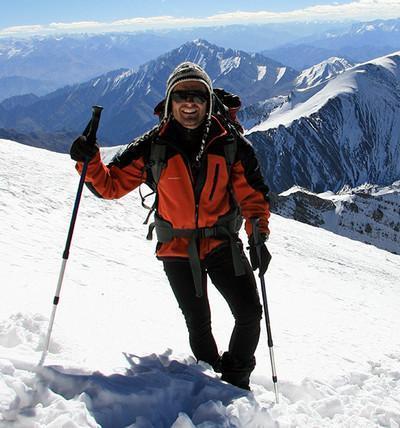A ski helmet is an important safety accessory to wear while skiing. It will protect your head from the sun and snow, and it will also keep your eyes clear from any obstructions. If you don't own any it's at least to use bike helmet for skiing. Aside from its safety functions, a helmet can also be a fashion statement. You can personalize your helmet by adding stickers, designs, or paint to make it unique.
Whether You Should Wear a Ski Helmet
When you go skiing, it is important to wear a ski helmet to protect your head. Whether you are a beginner or an experienced skier, a helmet is a necessity. Regardless of your skill level, you will fall at least once. Although most of these falls are not serious, some can be dangerous. A ski helmet will help you avoid these accidents and protect your head.
When choosing a ski helmet, make sure it fits properly and securely. Many brands offer several sizes for different heads. The size that you select should fit snugly but not too tightly. It is best to try on a helmet before buying it, as you do not want to end up with a helmet that doesn't fit well. Also, it should not wobble or press against your head.
There are many different styles of helmets to choose from. You don't need to spend a lot of money, but a better helmet will keep your head and neck protected. It should fit snugly, so you don't get uncomfortable or have trouble seeing. If it's too loose, the helmet may fall off. Another reason to wear a helmet is to protect your head during an emergency.
Choosing a Ski Helmet
Choosing a ski helmet is an important decision and it saves lives, not just for safety but for comfort as well. It will keep you warm, prevent injuries and provide the best possible protection from falling objects. There are several different types and styles to choose from. From helmets that include built-in visors to models that are 3-season ready, there's a ski helmet for everyone.
While shopping, it's essential to try on several sizes and models. It's important to ensure that the helmet fits properly. It shouldn't be too tight or too loose, as this can lead to discomfort and reduced protection. In addition, some helmets have dials on the back that can be rotated to fit different head sizes. It is also important to note that the helmet should sit level with the head and should not rest on the back of the neck. It should cover the forehead, but shouldn't be too loose that it can move when you're skiing.
Ventilation is another important feature to look for when selecting a ski helmet. The proper ventilation allows moisture and heat to escape and is essential to protect your head. Many ski helmets have adjustable vents for better air flow. The more expensive ones will typically have more vents, while cheaper models may only have a few. You should choose a ski helmet with sufficient ventilation to protect your head from the sun.
Choosing a Ski Helmet Size
The first step in choosing the correct ski helmet size is to measure your head circumference. You can use a fabric tape measure to do this. Make sure to place the tape just above your eyebrows. Pull the tape tight so that you do not get any loose edges. Then, measure your head against a ruler. Different styles of helmet will fit different sizes.
If you're not sure what size you need, a ski shop can help you measure your head. They will usually have a special measuring tape. If they don't, you can also measure yourself with a tape measure. Run the tape a couple of centimetres above your brow bone and then compare your measurement to the chart. Different manufacturers make different sizes and shapes, so it's important to know your size before purchasing a new ski helmet.
The helmet should fit snugly but not move around when you shake your head. It should also be able to close under your chin and stay on your head comfortably. If it fits properly, you should not have to adjust the chin strap, and you can use the open mouth method to dial in the fit.
Choosing a Ski Helmet Brand
Choosing a ski helmet that fits properly and comfortably is a big part of preventing head injuries. A helmet should fit snugly around the neck and head, and the chin strap should be easy to adjust. Some manufacturers have added magnetic clips to make it easier to adjust your helmet even while wearing gloves. Choose the clip style that works best for your particular head shape and preference. Another important factor to consider when choosing a ski helmet is the type of protection that it provides. There are two main types of ski helmets: full face and partial face. Full face helmets are constructed to provide the most protection and are most commonly used by racers and big-mountain skiers.
The design and technology of ski helmets vary, and the most suitable helmet for your needs depends on the sport you are doing. Some are designed for resort skiing while others are best suited for backcountry skiing. The features of your ski helmet should suit your needs, and you should consider the brand's reputation for comfort.





